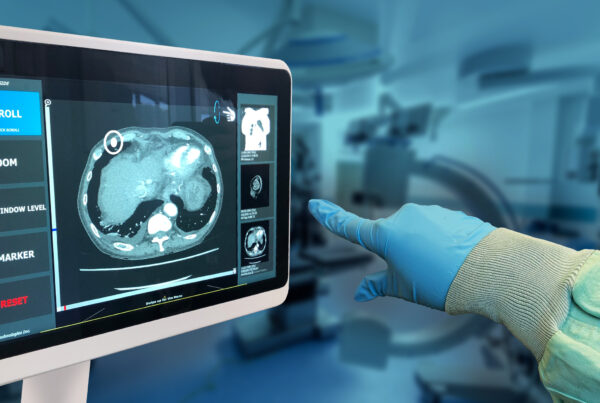
NZ TECHNOLOGIES INC. (NZTECH) IS AN ICICS-INCUBATED START-UP COMPANY THAT DEVELOPS INTELLIGENT DEVICES FOR SAFETY AND INTUITIVE HUMAN-MACHINE INTERACTIONS IN THE AUTOMOTIVE, RESIDENTIAL, AND CLINICAL SECTORS
President and CEO Nima Ziraknejad, who founded the company in 2009, believes that consumers could benefit more from sensing technologies, particularly machine vision, than they have. As an industrial partner in a research project sponsored by the AUTO21 Network of Centres of Excellence, NZTech is working to commercialize an adaptive and automatic head restraint, or headrest, system that helps prevent whiplash injuries. Ziraknejad was heavily involved in the underlying research during his PhD studies, developing a hybrid sensor array that adapts the head restraint position to the location and orientation of the driver’s head, in accordance with guidelines from the Insurance Institute for Highway Safety.
Whiplash is a common, debilitating occurrence in vehicular accidents, most often occurring as a result of rear or side impacts where the occupant’s head is thrown backwards and sideways, causing soft tissue damage in the neck or back. Whiplash is extremely painful, and can take months or even years to heal, and sometimes never does. Head restraints can help mitigate the resulting injury, but only if correctly positioned.
A self-contained, motorized head restraint prototype system has been developed, with a customized capacitive sensor array integrated in the front of the device. Using electric field sensing, the array measures the distance between the back of the occupant’s head and the front of the restraint, and a 3D time of-flight camera installed below the rear-view mirror determines the orientation of the occupant’s head. This latter information is important, since whiplash severity is greater when the vehicle occupant’s head is turned—the restraint needs to be that much closer to limit the injury.
“With the fused sensor data,” Ziraknejad says, “we can control motors embedded in the head restraint to raise and lower it, and move it forward and backward.” Ongoing research will determine the optimal position for mitigating whiplash injuries, given the occupant’s head position and orientation. Appropriate intervals for re-positioning the headrest in the course of normal driving will be determined as well. Knowledge of the driver’s head orientation also lends itself to possible driver distraction/fatigue detection applications.
”We can control motors embedded in the head restraint to raise and lower it, and move it forward and backward.
Dr. Nima Ziraknejad
Machine Vision at Your Fingertips
On the residential side, NZTech is part of a sixmember industrial consortium led by TELUS that is supporting the ICICS “People and Planet Friendly Home” sustainability initiative (see Innovations, Fall/Winter 2012). In this project, 25 researchers from 7 different UBC departments are developing novel integrated technologies for residential spaces that promote both sustainability and quality of life.
In the research strand supported by NZTech, machine vision and cloud computing are being harnessed to assist in cooking and baking. The researchers and NZTech have developed a small, portable device equipped with 3D cameras, a thermometer, and an ARM processor-based embedded system, that attaches to the outside of the window in the oven door. As an item is cooking, it selectively senses for designated states, such as a certain colour, that will indicate that the item is done. This information is correlated with the item’s internal temperature determined by a cooking thermometer, and an alert together with live video frames of the food are sent to the resident on a mobile device. Selective sensing does not capture the entire object of interest, therefore requires less bandwidth to transmit the live images. In addition, less onboard preprocessing is required, reducing power consumption. Additional processing, if necessary, is done on a cloud-based server. “There is a trade-off,” Ziraknejad states. “You might be able to do all of the processing onboard, but at the cost of higher power consumption. By leaving the heavy processing for the cloud, we can also keep the system working in real-time, which is critical.
Real-time, portable machine vision and processing for a variety of tasks in the home is NZTech’s ultimate goal for the device, having developed a proof-of-concept prototype for the oven application. The company is now working on a pan-and-tilt mount, so the device can be placed anywhere in the home and targeted as required. They are also investigating the feasibility of wireless power transmission to the device.
“We hope to have a suite of image-processing modules for different applications,” Ziraknejad says, “including drug dosage reminders and fall detection. We want to provide machine vision at your fingertips.” He means this last point both figuratively and literally. The company is developing a gesture and voice-based interface, associated with a light projector that can project results on any surface. Internet-based information such as weather or traffic patterns could also be requested by a voice command, then projected on a designated surface with a certain gesture. “We are aiming at an affordable, general platform that can do many things for you,” Ziraknejad states. With a working prototype in hand and ICICS research heft behind him, NZ Technologies is well on the way.
For more information, contact NZ Technologies at info@nztech.ca






